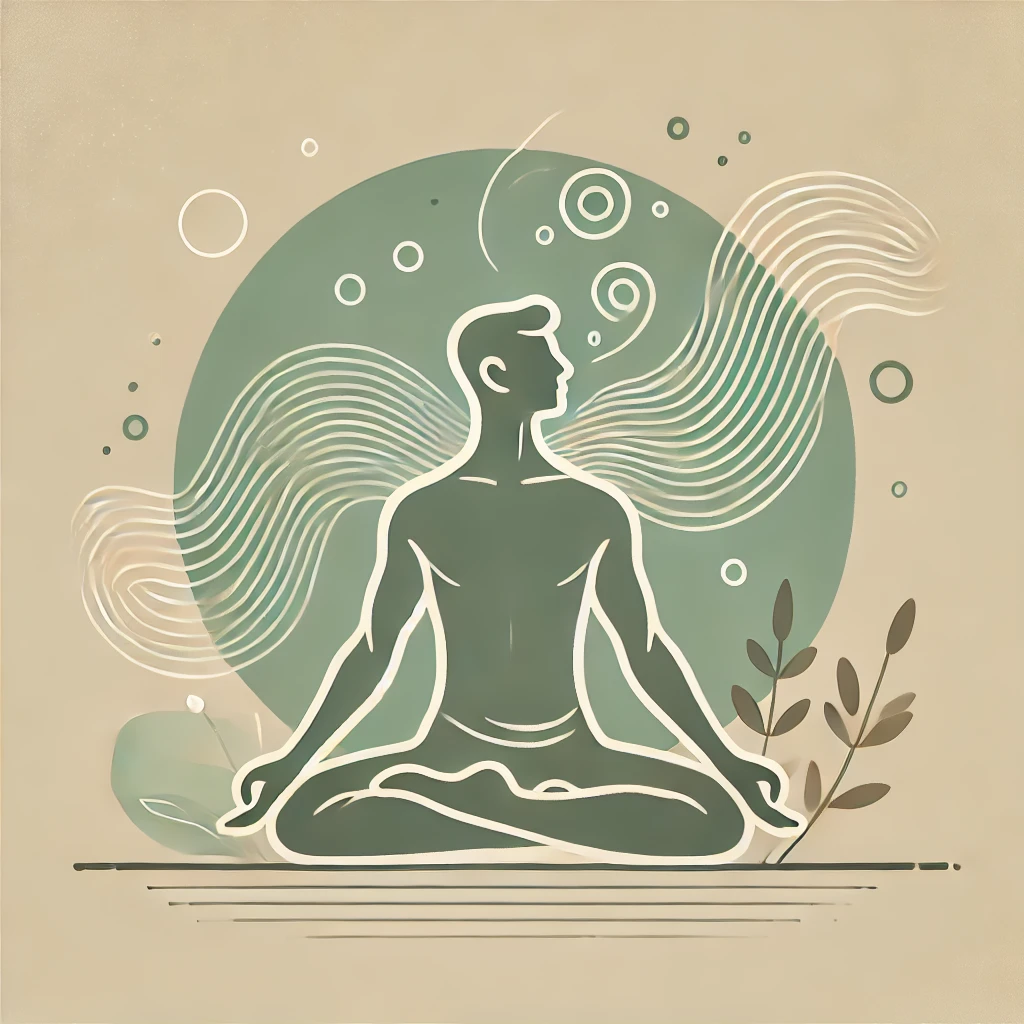Why Do Yoga?
I’ll be honest with you—getting older is scary.
No one warns you about the exact moment your back starts aching or when one day, out of nowhere, you realize you can’t touch your toes anymore.
I’m turning 32 this year, and while I can still do everything I did in my 20s, I’ve started noticing some unwelcome changes—longer recovery times, tighter muscles, a slower metabolism, and lower energy levels.
These changes are common as men age, but that doesn’t mean we have to accept them without action. I wanted to take control now so my future self would thank me later.
After researching ways to stay strong and mobile as I age, I discovered the powerful yoga benefits for men.
If you’re hesitant about giving yoga a shot, here are seven benefits that might just change your mind—just like they did for me.
7 Yoga Benefits for Men
1. Relieve back pain
I’ll admit it—my lower back isn’t what it used to be. The pain isn’t unbearable, but it’s there, quietly reminding me that I need to take better care of it.
I’m not alone. According to the Global Burden of Disease Study, low back pain affects over 619 million people worldwide, making it the leading causes of disability.
In recent years, yoga has become a widely recommended treatment for back pain—and for good reason. Research shows that practicing yoga can improve flexibility, strengthen core and back muscles, and reduce chronic pain.
In fact, the American College of Physicians even recommends yoga as a first-line treatment for managing lower back pain before turning to medication.
2. Improved heart health

As we age, maintaining heart health becomes even more important—especially with the impact of stress, inactivity, and poor diet on our cardiovascular system.
According to Johns Hopkins Medicine, yoga can play a significant role in supporting heart health by lowering blood pressure, cholesterol, and blood sugar levels, while also improving circulation and reducing stress. These benefits make yoga a powerful addition to a heart-healthy lifestyle.
Research also shows that yoga can be particularly beneficial for those with existing heart conditions. By enhancing relaxation, improving physical endurance, and supporting overall well-being, yoga has been linked to better exercise capacity and quality of life for individuals managing cardiovascular disease.
3. Better quality of sleep

We’ve all felt the effects of a bad night’s sleep—it makes work harder, drains energy, and slows recovery from workouts. But the power of high-quality sleep is a game-changer, and yoga can help make it a consistent reality.
According to the Sleep Foundation, yoga has been shown to improve sleep quality across all age groups, from children with Autism Spectrum Disorder to older adults dealing with insomnia. By reducing stress and promoting relaxation, regular yoga practice can help you fall asleep faster, sleep longer, and wake up feeling more refreshed.
While all types of yoga can contribute to better sleep, if you’re specifically looking for a pre-bedtime routine, the Sleep Foundation recommends Hatha yoga and Yoga Nidra. These styles focus on gentle poses and controlled breathing techniques, which calm the nervous system and prepare the body for rest.
4. Sharper brain
Did you know that practicing yoga can actually boost your brain health?
According to Harvard Health, yoga has a powerful impact on cognitive function, enhancing memory, attention, awareness, thought processing, and language skills. These mental benefits are especially important as we age, helping to counteract the natural decline in cognitive abilities.
Research suggests that yoga supports brain health by reducing stress, improving focus, and increasing blood flow to the brain, all of which contribute to sharper mental function over time.
Personally, keeping my brain sharp as I age is a big priority. Knowing that starting yoga at 32 can help strengthen my cognitive functions gives me peace of mind.
5. Improved flexibility and balance
I’ve always been impressed by older people who can still touch their toes. Now that I’m 32, I’m less impressed—because I can’t.
As someone who played soccer from childhood into adulthood, flexibility and balance used to come naturally. But in recent months, I’ve noticed a decline—tighter muscles, a stiffer body, and a frustrating loss of mobility.
Yoga is one of the most effective ways to improve flexibility and balance, yet many people assume that a few pre-workout stretches are enough. The truth is occasional stretching doesn’t compare to the long-term benefits of a consistent yoga practice.
In fact, a 10-week study on athletes found that those who practiced yoga saw significant improvements in flexibility and balance compared to those who didn’t. Even if you already incorporate stretching and stability training into your routine, yoga can take your mobility to the next level.
Over time, building flexibility and balance through yoga won’t just improve performance—it will help your body stay mobile and resilient as you age.
6. Reduce stress and anxiety

I’m sure I’m not alone in saying that stress and anxiety come and go throughout life. Some people experience them more than others, but no one is completely immune.
With life’s constant obstacles, stress can start to feel like a normal, unavoidable part of our daily routine—but what if we had a way to reduce it? Personally, if I can manage stress better, I want to take that option.
Thankfully, yoga has been shown to help combat anxiety, stress, and even depression. It works by regulating the body’s stress response system, helping to shift the nervous system away from the constant “fight or flight” mode and into a state of relaxation and balance.
Simply incorporating yoga poses and deep breathing exercises into your routine can have a profound impact on stress levels. That’s one of the biggest reasons I want to experience it for myself.
7. Better posture
I never thought much about my posture—until I caught a glimpse of myself slouching in a window reflection. Shoulders rounded, back hunched… not a good look.
Like many people, I spend a lot of time sitting—whether it’s working on my laptop, driving, or just relaxing. Over time, poor posture can lead to back pain, muscle imbalances, and even reduced mobility. And unfortunately, once bad posture becomes a habit, it’s hard to break.
That’s where yoga comes in. Yoga helps strengthen the core, open up the chest, and realign the spine, all of which contribute to better posture.
If you’ve ever caught yourself slouching or dealing with back discomfort, yoga might be exactly what you need to reset your posture and build long-term strength.
Final Thoughts
Aging may come with its challenges, but that doesn’t mean we have to sit back and accept them. Practicing yoga is one of the best ways to stay strong, mobile, and mentally sharp as the years go by. From reducing back pain and improving flexibility to boosting heart health and easing stress, yoga offers a well-rounded approach to both physical and mental well-being.
For me, starting yoga at 32 is about more than just improving my posture or touching my toes again—it’s about investing in my future self. Whether you’re an athlete, someone dealing with daily aches, or just looking for a way to feel better in your body, yoga has something to offer.
So why not give it a shot? A few sessions might just change the way you move, feel, and think—both now and for years to come.

